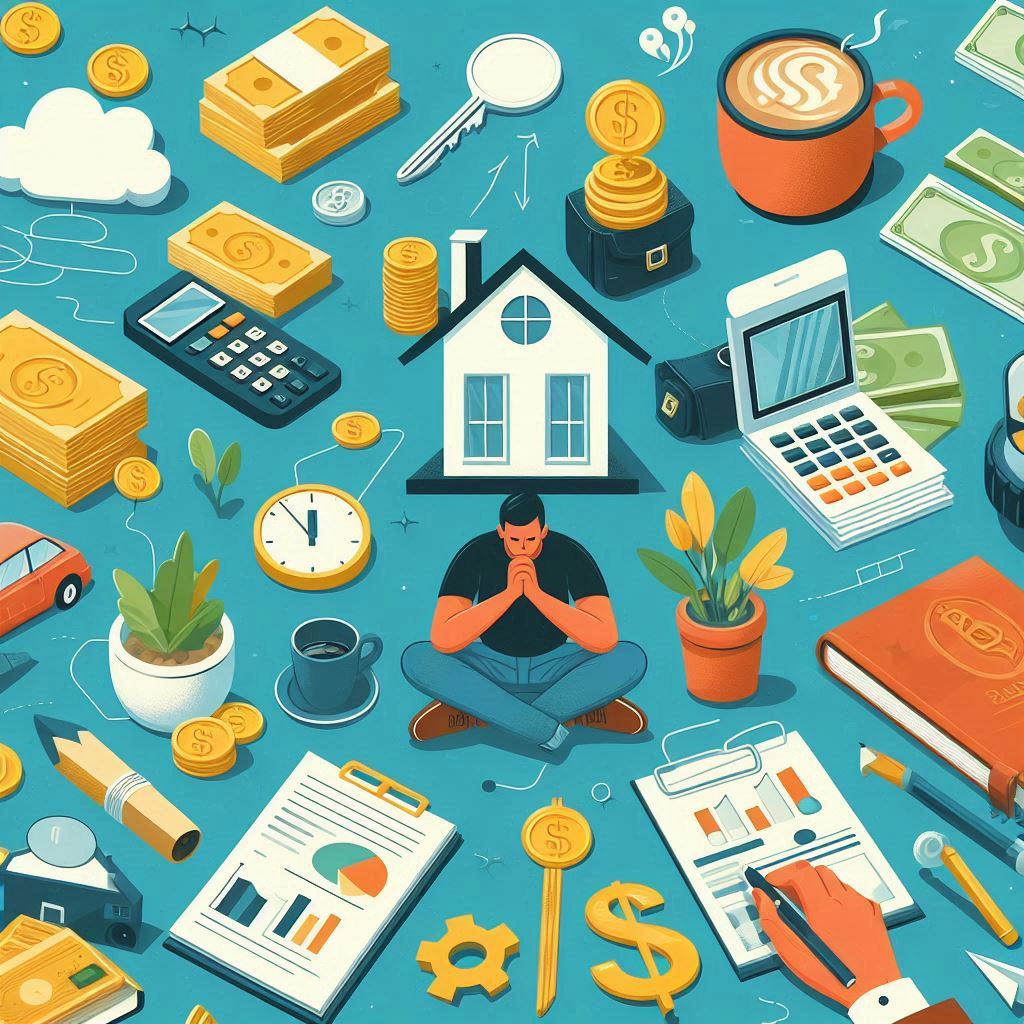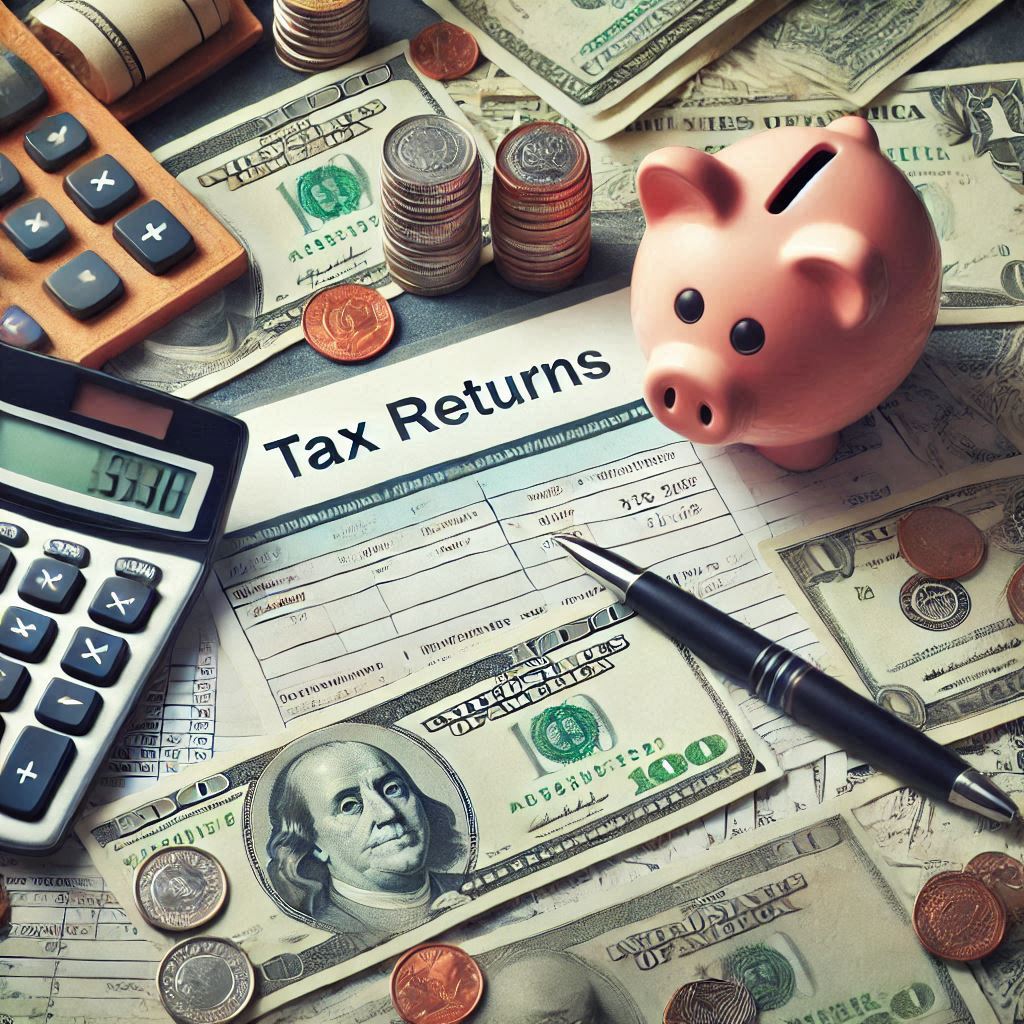Introduction
We’ve all been there—made a financial decision we wish we could take back. Whether it’s spending more than we earn, letting credit card debt pile up, or not preparing for the future, making money mistakes is part of life. However, you can overcome common money mistakes with the right strategies. By understanding these pitfalls and learning how to avoid them, you can take control of your financial future. In this guide, we’ll discuss practical steps to help you correct these mistakes, from living within your budget to building an emergency fund and more.
Disclaimer
The information provided in this article is for educational and informational purposes only and should not be construed as financial advice. I am not a financial adviser. Please consult with a certified financial professional before making any financial decisions.
Affiliate Disclosure: This article contains affiliate links to products. We may receive a commission for purchases made through these links at no extra cost to you. As an Amazon Associate, we earn from qualifying purchases.
Living Beyond Your Means: How to Adjust Spending and Live Within Your Budget
Living beyond your means is a common money mistake, but the good news is that it’s possible to overcome it by understanding where your money is going and adjusting your spending accordingly. It’s tempting to upgrade your lifestyle as your income increases, but if you’re spending more than you earn, you’re setting yourself up for financial trouble. Let’s break down how you can stop living beyond your means and start building a sustainable budget.
Recognizing Lifestyle Inflation
One of the main culprits behind living beyond your means is lifestyle inflation—when your spending increases as your income does. You might get a raise and immediately think, “Great! Now I can afford that new car or upgrade my apartment.” But these upgrades can lead to higher expenses that eat away at your increased earnings.
Tips to Avoid Lifestyle Inflation
• Track Your Expenses: The first step to living within your means is to know where your money is going. Use budgeting apps like You Need A Budget (YNAB) to track your expenses.
• Differentiate Wants from Needs: When making a purchase, ask yourself if it’s something you truly need or just a temporary desire. Avoid impulse purchases that aren’t aligned with your budget.
• Create a Realistic Budget: Plan a budget that includes all necessary expenses—housing, food, transportation—and then allocate some funds for savings and investments. Sticking to a budget will help ensure you don’t overspend.
For more on how to lavoid lifestyle inflation, check out our post on How to Avoid Lifestyle Inflation: Stay Financially Grounded.
Example Scenario: Reducing Monthly Expenses
Maria used to spend over $200 per month eating out. After reviewing her budget, she decided to reduce this to $50 per month by meal prepping and cooking at home. She now uses the extra $150 to build her emergency fund.
By making small adjustments, you can save money without feeling deprived. The key is consistency.
Not Having an Emergency Fund: Why It’s Crucial and How to Start Saving
An emergency fund is your financial safety net for life’s unexpected events—whether it’s a car repair, medical expense, or job loss. Not having one can leave you vulnerable to debt and financial stress. Let’s explore why an emergency fund is essential and how to build one.
Why an Emergency Fund Matters
Life is unpredictable, and emergencies can pop up when you least expect them. Without an emergency fund, you might turn to credit cards or loans to cover unexpected expenses, which can lead to a cycle of debt.
How Much Should You Save?
Experts recommend having three to six months’ worth of living expenses saved in your emergency fund. This may seem overwhelming, but the key is to start small and build it over time.
Tips to Build Your Emergency Fund
• Start Small: Aim to save $500 to $1,000 as your initial goal, then work your way up to three to six months’ worth of expenses.
• Automate Your Savings: Set up an automatic transfer from your checking account to a high-yield savings account each payday. This way, you don’t have to think about saving—it happens automatically!
• Cut Back on Non-Essentials: Identify areas where you can reduce spending (like dining out or streaming services) and funnel those savings into your emergency fund.
For more details on emergency funds, visit our blog post Emergency Funds: Why You Need One and How to Build It.
Example Scenario: Building an Emergency Fund
John works as a freelancer and has an unpredictable income. He set up an automatic transfer of $100 each month into his emergency fund. Within a year, he saved $1,200, which provided peace of mind during slow work months.
Starting small can lead to significant savings over time. The key is consistency and planning.
Falling into Credit Card Debt: How to Manage and Avoid Debt Pitfalls
Falling into credit card debt is another common money mistake that many people struggle to overcome. Credit cards can be useful for building credit and earning rewards, but they can also lead to dangerous levels of debt if not managed responsibly. Here’s how to avoid falling into the credit card trap and tips to manage debt if you’re already in it.
The Debt Trap
Credit card debt often starts small—an unexpected expense here, a splurge there—but over time, interest can build, making it difficult to pay off. The average interest rate for credit cards is around 16-24%, which means carrying a balance can be costly.
How to Manage Credit Card Debt
• Pay More Than the Minimum: Always aim to pay more than the minimum payment to avoid interest piling up. If possible, pay your balance in full each month.
• Use the Snowball Method: Focus on paying off the card with the smallest balance first, while making minimum payments on other cards. Once that’s paid off, move to the next smallest balance.
• Balance Transfers: Some credit card companies offer 0% balance transfer promotions. This can help you pay off debt faster without accruing additional interest.
For more debt management tips, check out our blog post on How to Get Out of Credit Card Debt.
Example Scenario: Tackling Credit Card Debt
Lisa had $5,000 in credit card debt across two cards. She used the snowball method, paying off her smallest balance of $1,200 first. Afterward, she redirected her payments toward the larger balance. Within 18 months, she was debt-free.
By having a strategic approach to paying off debt, you can regain control over your finances.
Neglecting to Invest Early: Why You Should Start Your Investment Journey Now
One of the most common money mistakes is waiting too long to start investing. The earlier you begin, the more time your money has to grow through the power of compound interest. Here’s why starting early is crucial and how you can begin your investment journey.
The Power of Compound Interest
Compound interest is often referred to as the eighth wonder of the world because it allows your investments to grow exponentially over time. The longer you invest, the more your money compounds, which means you earn interest on your interest.
How to Start Investing
• Start with Retirement Accounts: Contribute to tax-advantaged accounts like a 401(k) or IRA. If your employer offers a match, be sure to contribute enough to take full advantage.
• Invest in Low-Cost Index Funds: These are great for beginners because they offer diversification and lower fees. Index funds track the performance of the market, which means you can invest passively without constantly monitoring the market.
• Stay Consistent: Consistency is key when investing. Contribute regularly to your accounts, even if it’s a small amount. The sooner you start, the more time your money has to grow.
Books like The Simple Path to Wealth provide easy-to-follow strategies for building wealth through investing.
For more advice on getting started, read our post on Investing Basics: How to Invest with Confidence.
Example Scenario: The Benefits of Starting Early
Alex started investing $200 a month in an index fund at the age of 25. By the time he turned 35, his investments had grown to $36,000. Thanks to compound interest, if he continues to invest $200 monthly, his investments could reach over $300,000 by age 60.
Starting early makes a big difference in the long-term growth of your investments.
Conclusion
Overcoming common money mistakes isn’t about perfection; it’s about making informed, practical decisions that set you up for long-term success. Whether you’re working on living within your means, building an emergency fund, paying off credit card debt, or starting your investment journey, the key is to take small, consistent steps. Financial mistakes are part of the learning process, but by identifying them early and making adjustments, you can build a more secure financial future. Remember, it’s never too late to take control of your finances, and every effort counts toward improving your financial well-being.
The road to financial freedom is paved with opportunities to overcome common money mistakes. With the right mindset and tools, you can build a strong financial foundation. Starts with understanding where things may have gone wrong and actively working to fix them. Keep your eyes on the long-term benefits, whether it’s becoming debt-free, living within your budget, or growing your wealth through investments.
Start today, and you’ll be amazed at how far you can go!
We’d love to hear from you! Leave a comment below to share your thoughts. If you’d like to stay updated, just check the options below the comment box to be notified by email of follow-up comments or new posts. We only send updates when there’s valuable content to share—no spam, ever!
#Ad – Explore These Popular Items on Amazon – As an Amazon Associate, We may receive a commission for purchases made through these links at no extra cost to you. Such small commissions help us share useful tips for free. Thanks for your support.
You may be interested to check the Amazon Movers & Shakers. Below are also few selected items that may interest you.





